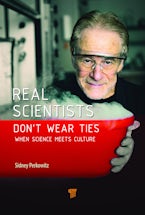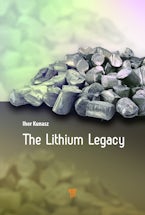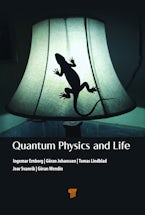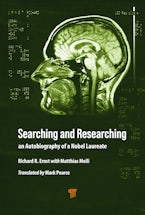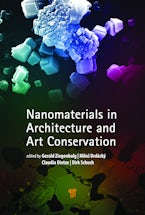How can scientists share their insights with laypeople in a way that encourages audience members to reframe their perspective? Sidney Perkowitz, a popular science writer and Emeritus professor of solid-state physics, has been attacking that question from all angles since his retirement from academia in 2011. His new book Real Scientists Don’t Wear Ties: When Science Meets Culture is an anthology of 50 essays he wrote between 1989 and 2018. The pieces are diverse in form and subject; articles explaining research concepts and technological innovations sit beside musings on science’s relationship with art and society. Over the course of the collection, Perkowitz triumphs, entertains, and stumbles, illustrating the full breadth of his career writing for the public.
Real Scientists Don’t Wear Ties has three sections—Science, Technology, and Culture—which could be read independently but also flow well if read continuously. In the first, Perkowitz breaks down scientific ideas from quantum entanglement to the meaning of the fundamental constants. Each article stands alone, but all describe complicated ideas for an audience of nonscientists. The book ends up repeating explanations of major concepts such as quantum principles, particle physics, and gravitation, although Perkowitz’s prose contains enough vivid metaphors to keep the reading enjoyable. For instance, one stellar essay draws parallels between the ancient four elements—earth, air, water, and fire—and the modern understanding of materials science; it shows how Greek and Enlightenment philosophers were right and wrong about our universe. Here and elsewhere, Perkowitz balances gradual pacing for learners with getting to the point for more knowledgeable readers.
The middle section, Technology, transitions from raw science to real-world application and touches on topics from space travel to artificial intelligence to genetic engineering. Standout essays include an ambitiously concise cultural history of lasers and a personal tale of cataract surgery—a story linked to the lives of artists like Monet, who could paint into old age because of advancing medical technology. In his musings, Perkowitz doesn’t shy away from politically thorny topics. One piece tracks eugenics from Nazis to the sci-fi film Gattaca; another one, discussing predictive policing by computer algorithms, includes interviews with police officers, software developers, and civil rights activists. Even on controversial topics, Perkowitz delivers valuable and nonpartisan information. He shows how new technology can change society and why we all ought to be aware of applications on the horizon.
Perkowitz is at his loftiest in the last section, Culture, which covers wide ground from humor to fine art to popular media. These final essays draw freewheeling parallels between scientific and artistic perspectives, analyze scientific realism in movies, and discuss the development of genres like science fiction. No matter your feelings about how science is portrayed in pop culture, there’s no question that the average person hears more about science through media channels than from scientists themselves. Perkowitz lays out how society (mis)understands research and researchers, which helps us in the physics community relate to our audience and address possible misconceptions immediately.
Given the chronological span of this anthology, it’s no surprise some essays have aged poorly. The title essay, “Real Scientists Don’t Wear Ties” (1991), on how scientists “reveal themselves by their dress,” is the oddest in that regard. I can swallow—wincingly—the title, an out-ofcontextquote from a woman describing a physics conference crowd. What reads more crudely, after a long exposition about beards and pocket protectors, is a gendered reference to female physicists’ clothing. Perkowitz writes that though women “suffer in their choices for insignia of rank,” they often communicate “nuances of position and success to other women” through jewelry. Nearly three decades later, physics is marginally more gender balanced, and happily we are also more receptive to a wider range of gender expressions. Female, non-binary, and male physicists are now more welcome to be “real scientists” in whichever choices of dress they prefer.
Such dips are contextualized by glimmers of self-importance, such as the author’s self-portrait cover and the almost boastful material in the foreword. Furthermore, although the content of Real Scientists Don’t Wear Ties is diverse, the collection can feel repetitive. Most of the essays have a structure derived from the recipe Perkowitz outlines in the introduction: They start with an anecdote, move to “a look at the history of the subject,” and include “plentiful application of metaphor.” Still, for scientists trying their own hand at public communication, Perkowitz’s style is a good one to study.
The book’s grandiose yet comprehensive overviews of science topics bring to mind another recent book, Liquid Rules: The Delightful and Dangerous Substances That Flow Through Our Lives (2019) by materials scientist Mark Miodownik (see the review by Michelle Driscoll, PHYSICS TODAY, August 2019, page 54). That book also explains a wealth of scientific concepts, but uses the theme of examining liquids on an airplane to make the topics cohere into a single narrative. In comparison, Real Scientists Don’t Wear Ties feels scattered at times. However, readers of all backgrounds will still benefit from the engaging prose in Perkowitz’s diverse collection. Let us hope that if more physicists read this book, more of us will be convinced to distill our own research and ideas into writing for public consumption.
~Brian Kraus, Princeton University, Physics Today

